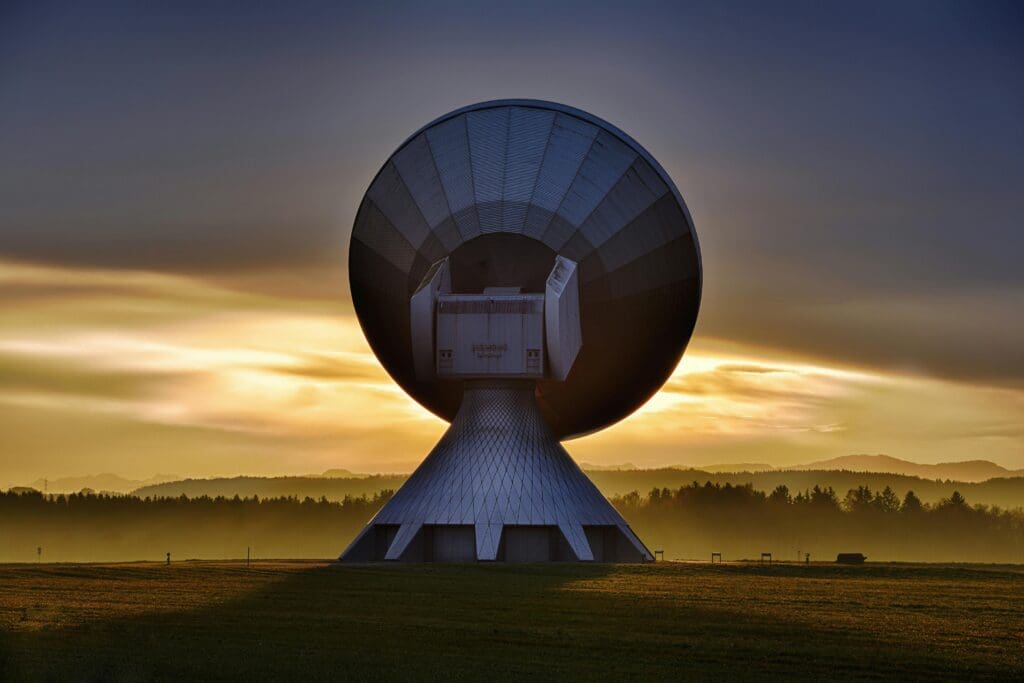The Sun’s influence on Earth goes far beyond providing warmth and light. Its constant activity – solar flares, coronal mass ejections (CMEs), and geomagnetic storms – sends waves of energy and particles rippling through space, shaping not just our planet but life itself. From birds migrating thousands of miles to humans feeling inexplicably uneasy during geomagnetic storms, the Sun’s hidden hand is at work.
In this article, we’ll delve into how organisms, including humans, sense and respond to changes in the geomagnetic field and how these solar phenomena affect life on Earth. You’ll discover why understanding these effects isn’t just fascinating – it’s essential for navigating our increasingly solar-dependent future.
The Animal Kingdom’s Hidden Compass
Many animals possess an extraordinary ability to navigate using Earth’s magnetic field. This phenomenon, called magnetoreception, relies on specialized organs or molecular mechanisms to sense geomagnetic changes.
Birds and Their Magnetic Maps

Migratory birds, for example, use an internal “compass” to traverse continents. This ability is believed to be linked to cryptochromes – light-sensitive proteins in their retinas. These proteins react to Earth’s magnetic field, enabling birds to perceive directional cues.1
Sea Turtles: Journeys Across Oceans

Sea turtles hatch on beaches and embark on long migrations to feeding grounds, guided in part by geomagnetic imprinting. This allows them to recognize the magnetic signature of their birthplace years later when returning to lay eggs.2
Insects and Fish

Monarch butterflies rely on both the Sun and geomagnetic cues to navigate their incredible 3,000-mile migration. Similarly, certain fish, like salmon, use geomagnetic fields to find their way from oceanic feeding grounds to freshwater spawning sites.3
Mechanisms Behind Magnetoreception
Cryptochromes and Magnetic Sensing
Cryptochromes aren’t just for birds – they’re found in many organisms, including plants and humans. These proteins react to magnetic fields through quantum chemical processes, suggesting a potential basis for magnetoreception across species.4
Iron-Based Magnetoreceptors

Some animals, like certain migratory fish, possess iron oxide (magnetite) in their bodies. These iron-based structures align with Earth’s magnetic field, functioning like biological compasses. For example, honeybees use magnetite to orient themselves while foraging.5
The Human Connection: Can We Feel Solar Weather?
While humans lack obvious magnetoreceptive organs, emerging research suggests we may be more sensitive to geomagnetic activity than previously thought.
Circadian Rhythms and Melatonin
Geomagnetic disturbances can disrupt the production of melatonin, a hormone critical for regulating sleep and circadian rhythms. Studies indicate increased insomnia and restlessness during geomagnetic storms, particularly at higher latitudes where magnetic activity is more intense.6
Cardiovascular Effects
Solar weather’s impact on the cardiovascular system is profound. Geomagnetic storms correlate with increased incidences of heart attacks, strokes, and arrhythmias. During intense solar activity, the risk of heart attacks can rise by as much as 270%.7
Mood and Mental Health
Mental health also appears linked to solar weather. During geomagnetic storms, hospitalizations for mood disorders, including depression and bipolar disorder, significantly increase. One theory suggests that these storms act as environmental stressors, disrupting neurological and hormonal balance.8

A Glimpse Into the Science
Laboratory Evidence
Experiments have shown that geomagnetic storms influence cellular processes. For example, simulated geomagnetic disturbances can alter calcium signaling in nerve cells and affect enzyme activity in various organisms, including humans.9
Epidemiological Studies
Large-scale studies have confirmed correlations between geomagnetic activity and health outcomes. A review of over 6.3 million ambulance calls found a clear increase in heart attacks and strokes during geomagnetic storms.10
Practical Implications for Modern Life
Solar weather doesn’t just affect health – it can disrupt modern technology, from GPS systems to power grids. For example:
- GPS Navigation: Solar flares can cause GPS inaccuracies, affecting everything from aviation to smartphone apps.
- Power Grids: Geomagnetic storms can induce currents in power lines, causing blackouts and equipment damage.
- Satellite Communications: Increased solar radiation can disrupt satellite operations, affecting internet and TV services.

Why Stay Informed?
Understanding solar weather isn’t just an academic pursuit; it’s a practical necessity. With our growing reliance on satellite-based technologies, knowing when solar storms are likely can help mitigate risks. For example:
- Pilots and astronauts can plan routes to avoid excessive radiation exposure.
- Power companies can prepare for potential surges caused by geomagnetic storms.
- Individuals with health sensitivities can take precautions during periods of intense solar activity.
Take Control with FlareAware
At FlareAware, we make it easy to stay informed. Our real-time alerts keep you ahead of solar weather events, whether you’re concerned about health impacts or the reliability of your technology. Sign up today at FlareAware.com and take the first step toward understanding and navigating the Sun’s effects on your life.
References
- Cryptochrome studies in migratory birds. Nature. Available at: Nature Link – Back to text
- Geomagnetic imprinting in sea turtles. ScienceDirect. Available at: ScienceDirect Link – Back to text
- Monarch butterfly migration and magnetic cues. Oxford Academic. Available at: Oxford Academic Link – Back to text
- Quantum chemical reactions in cryptochromes. ACS Publications. Available at: ACS Link – Back to text
- Magnetite-based navigation in honeybees. Royal Society Publishing. Available at: Royal Society Link – Back to text
- Melatonin disruption during geomagnetic storms. SAGE Journals. Available at: SAGE Link – Back to text
- Cardiovascular risks associated with solar weather. Springer Link. Available at: Springer Link – Back to text
- Mood disorders linked to geomagnetic activity. BMC Psychiatry. Available at: BMC Link – Back to text
- Cellular effects of geomagnetic disturbances. Frontiers in Neuroscience. Available at: Frontiers Link – Back to text
- Epidemiological studies on solar weather and health. ScienceDirect. Available at: ScienceDirect Link – Back to text
